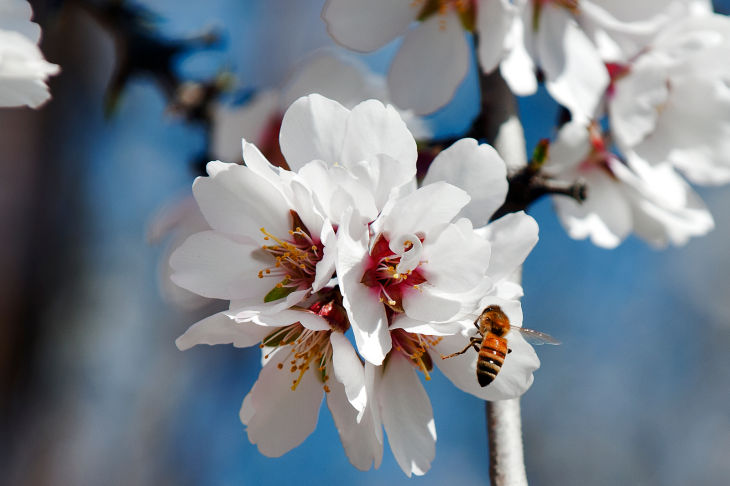12
Feb
Study Blames Pollinator Decline on Disease, Despite Overwhelming Evidence Pointing to Bee-Killing Pesticides
(Beyond Pesticides, February 12, 2015) A new study published last week asserts a viral epidemic driven by parasitic mites is contributing to the global decline in bees, problematically underplaying the significant impact that bee-toxic neonicotinoid insecticides have on pollinator populations, as supported by a growing body of scientific literature, especially findings that show bees’ increased vulnerability to parasites and viruses.
 Researchers of the study, titled “Deformed wing virus is a recent global epidemic in honeybees driven by Varroa mites” and published in the journal Science, conclude that the deformed wing virus (DWV), which is typically transmitted through its main vector, the Varroa mite, is globally distributed and recently spread from a common source, European honeybee Apis mellifera. Lead researcher Lena Bayer-Wilfert, PhD, of the University of Exeter, said European bees are at the heart of the global spread of what she calls a “double blow” for colonies. “This is clearly linked to the human movement of honey bee colonies around the globe,” she told BBC News.
Researchers of the study, titled “Deformed wing virus is a recent global epidemic in honeybees driven by Varroa mites” and published in the journal Science, conclude that the deformed wing virus (DWV), which is typically transmitted through its main vector, the Varroa mite, is globally distributed and recently spread from a common source, European honeybee Apis mellifera. Lead researcher Lena Bayer-Wilfert, PhD, of the University of Exeter, said European bees are at the heart of the global spread of what she calls a “double blow” for colonies. “This is clearly linked to the human movement of honey bee colonies around the globe,” she told BBC News.
Co-researcher Professor Roger Butlin of the University of Sheffield said DWV was a major threat to honey bee populations across the world with the epidemic “driven by the trade and movement of honeybee colonies.” Professor Stephen Martin of the University of Salford, another co-researcher, said the combination of the virus and the mite were at the heart of the crash in honeybee populations. “It supports the idea that DWV is the main cause for the colony losses associated with Varroa and that this comes from European bees,” he said, according to BBC.
The new study, however, fails to acknowledge the role that neonicotinoids are playing in the pollinator decline. Other studies on the subject reveal a clear link between these chemicals and the synergistic effects they have on bees when combined with parasites and disease, such one published by Di Presco et al. (2013), which found that the neonicotinoid clothianidin reduced insect immunity, as well as promoted of viral replication in honey bees by up to 1,000-fold, after exposure to field-realistic and sublethal doses. A review of recent literature concludes that the weight of evidence “strongly confirms that systemic insecticides, notably the neonicotinoids”¦, are the primary factor in the death of millions of bee colonies globally.”
Neonicotinoid are taken up by a plant’s vascular system and expressed through pollen, nectar, and guttation droplets from which bees forage and drink. They are particularly dangerous because, in addition to being acutely toxic in high doses, they also result in serious sublethal effects when insects are exposed to chronic low doses, as they are through pollen and water droplets laced with the chemical, as well as dust that is released into the air when coated seeds are planted with automated vacuum seed planters. These effects cause significant problems for the health of individual honey bees as well as the overall health of honey bee colonies. Effects include disruptions in bee mobility, navigation, feeding behavior, foraging activity, memory and learning, and overall hive activity.
Beyond Pesticides has long advocated a regulatory approach that prohibits high hazard chemical use and requires alternative assessments. Farm, beekeeper, and environmental groups, including Beyond Pesticides, have urged EPA to follow in the European Union’s footsteps and suspend the huge numbers of other bee-harming pesticides already on the market. We suggest an approach that rejects uses and exposures deemed acceptable under risk assessment calculations, and instead focuses on safer alternatives that are proven effective, such as organic agriculture, which prohibits the use of neonicotinoids. See how you can help through Bee Protective.
All unattributed positions and opinions in this piece are those of Beyond Pesticides.











I wonder who paid for the study…
February 12th, 2016 at 5:59 pm